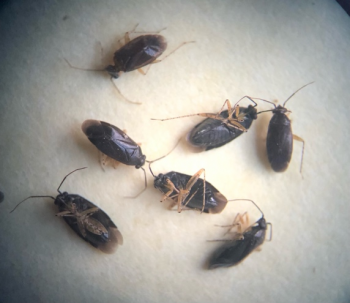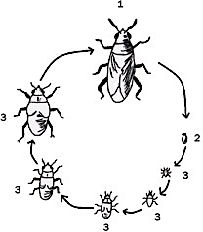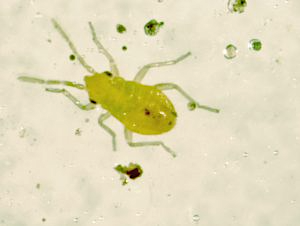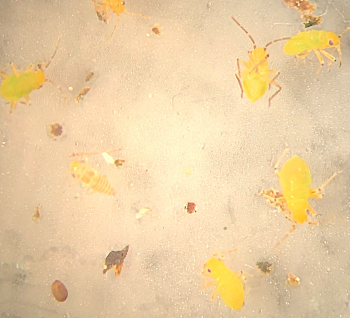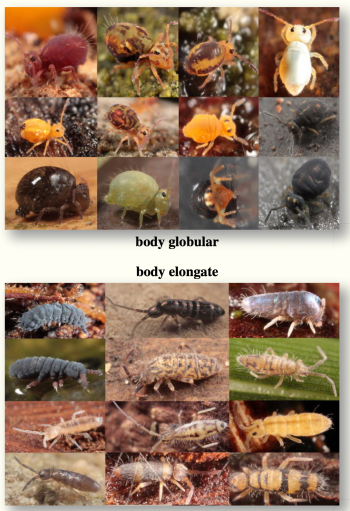Cranberry Black Bug in MA Cranberry (March 2023)
CRANBERRY BLACK BUG
IN MA CRANBERRY
Plagiognathus repetitus
Martha M. Sylvia and Anne L. Averill
University of Massachusetts-Amherst
Cranberry Station, East Wareham, MA
March 2023
In Massachusetts cranberry, we recently found significant injury caused by cranberry black bug, a plant bug in the insect order Hemiptera and in the insect family Miridae. Large swaths on a bed produced little or no fruit as a result of the feeding injury. We only detected black bug on a few bogs that were under organic or low-input management. Years ago, it was reported on MA cranberry, particularly on Cape bogs, and has also been reported in NJ.
Cranberry black bug, Plagiognathus repetitus, is active in May as a nymph. We found adults in June and early July. There was significant leaf damage and low crop associated with counts of 10-25 insects.
BIOLOGY. Henry J. Franklin reported that cranberry black bug overwinters in the egg stage (H.J. Franklin. 1950. Cranberry insects in Massachusetts. Massachusetts Agric. Exp Station Bull. 445). It has been recorded on other ericaceous plants such as sheep laurel.
Black bugs have piercing-sucking mouthparts that have a tubular, jointed beak. The beak is inserted into the leaf and plant juices are sucked.
INJURY. As of this writing, we believe that the majority of vine injury delivered by cranberry black bug occurs in the early season (May-June). In June, we observed greatly deformed leaves and in July, we observed swaths of crop loss.
MANAGEMENT. Sweep for the light yellow or greenish nymphs in late May into June and then for adults in June into July. Injury to the vines (deformed leaves at the top of the vine) are apparent in late June into July. If needed, a broad spectrum spray such diazinon would be applied. We may know more about other spray options as other outbreaks are reported, so consult the Cranberry Station for field reports.
COLLEMBOLA (SPRINGTAILS) MAY LOOK LIKE IMMATURE (NYMPHAL) BLACK BUGS. Springtails are not harmful to cranberry. They are typically very small, but sometimes larger ones will be picked up. They are often found in large numbers in spring sweeps. They perform well under bog conditions and graze on decaying vegetation, fungi, bacteria, and algae. The best bet for training the eye for Collembola is to first examine them under a magnifier.
